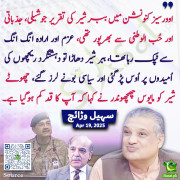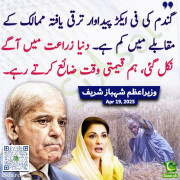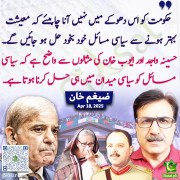Khansaber
Senator (1k+ posts)
According to the latest official figures, the annual GDP growth rate eased to 6.7% between April and June, down from 7.8% in the previous quarter. That is the slowest expansion in more than a year.
“Three dark clouds” loom over the economy: weak private investment, stagnant manufacturing and falling real wages.
In Tamil Nadu a strike by workers at a Samsung plant, which has now entered its second month, has cast a cloud over Mr Modi’s ambitions to make India an electronics hub.
The country’s labour issues, however, extend beyond pay disputes. Too many people still work on farms.
Things could get worse if the conflict in the Middle East escalates and oil prices keep rising. More than 85% of India’s oil consumption is sourced from abroad, making it vulnerable to oil-price shocks. Estimates suggest that a $10 increase in the price of an oil barrel could shave up to 0.4% off India’s GDP.
Too much of the government’s subsidy pot is directed towards capital-intensive sectors rather than labour-intensive ones policymakers should make it easier for firms to scale up operations. In a new study growing trend of firms operating multiple small factories within a state to diversify risk and comply with regulations—but these firms tend to be less productive.

index tracking output in eight core industries, such as coal, oil and electricity, fell in August for the first time in more than three years. In September car sales, a proxy for consumption, fell by 19% year on year. Growth in collections from the goods-and-services tax, another indicator of economic health, also fell to its lowest level in more than three years. Even India’s stockmarkets, which have been on a tear recently, suffered losses for six consecutive days.
Economist & BusinessToday
“Three dark clouds” loom over the economy: weak private investment, stagnant manufacturing and falling real wages.
In Tamil Nadu a strike by workers at a Samsung plant, which has now entered its second month, has cast a cloud over Mr Modi’s ambitions to make India an electronics hub.
The country’s labour issues, however, extend beyond pay disputes. Too many people still work on farms.
Things could get worse if the conflict in the Middle East escalates and oil prices keep rising. More than 85% of India’s oil consumption is sourced from abroad, making it vulnerable to oil-price shocks. Estimates suggest that a $10 increase in the price of an oil barrel could shave up to 0.4% off India’s GDP.
Too much of the government’s subsidy pot is directed towards capital-intensive sectors rather than labour-intensive ones policymakers should make it easier for firms to scale up operations. In a new study growing trend of firms operating multiple small factories within a state to diversify risk and comply with regulations—but these firms tend to be less productive.

index tracking output in eight core industries, such as coal, oil and electricity, fell in August for the first time in more than three years. In September car sales, a proxy for consumption, fell by 19% year on year. Growth in collections from the goods-and-services tax, another indicator of economic health, also fell to its lowest level in more than three years. Even India’s stockmarkets, which have been on a tear recently, suffered losses for six consecutive days.
Economist & BusinessToday


































